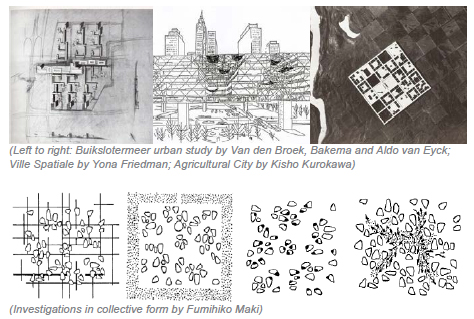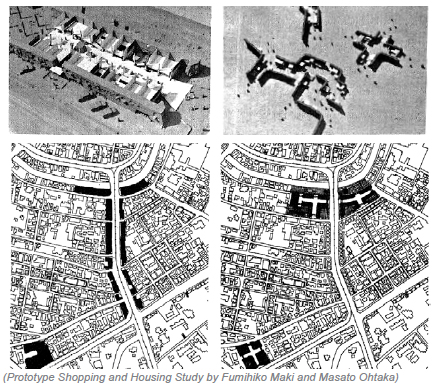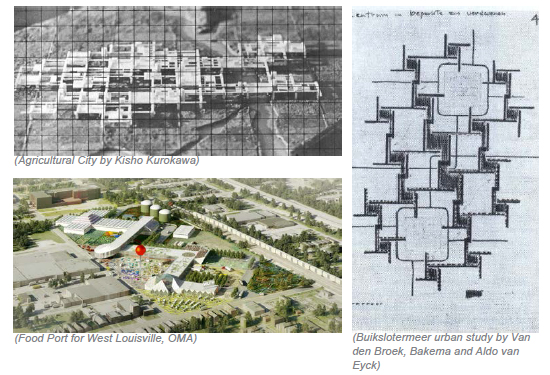Informal Agglormeration
|
“The mistake of the progressive commercial mind was to give undue importance to those modes of circulation that promised the highest financial return: this led the planner to overlook the role of the foot-walker, and the need for retaining the flexibility of mass movements that only pedestrian circulation can ensure .” – Lewis Mumford The thesis is to challenge the social phenomenon of commercial agglomeration of clusters of small individual urban elements into monumental buildings which inhibit natural development of streetscape. By inducing urban magnets with a framework, it is hoped to recapture the vibrance of urban streetscape instead of being confined to wall-bounded retail space controlled by developers.
WHY? In the past, emperors attempted to shape and define people’s lives through the regulation of lived space through city infrastructure like wall system. However, it is found out that commerce were in fact more influenced by urban trends i.e. commercial activities were more attracted to the courier routes and commuter paths. Shops and business could flourish beyond the city wall. The situation is similar to our retail space nowadays which is confined to walls built and controlled by developers who are exploiting our autonomy of consumption and turning the role of consumers passive. Under the propagation of consumerism, individual blocks or architectural objects self-agglomerate into cluster and forcefully agglomerate into one monumental iconic building and thus reshape the city’s urban structure and how people move through the city. Is there any way to contend against the agglomeration of street public retail space? Fumihiko Maki’s “Investigations in collective form” and “Towards Group Form” suggested the concept of organizing an orderly society without sacrificing individuality. The city is perceived as a collective form which is an agglomeration of various decisions. The focus was put in exploring a more flexible, expandable and dynamic approach in urban design. Shopping district in Shinsaibashi, Osaka was an example that the roof unifier simplifies and unifiers streets which were originally chaotic. “Shinjuku Redevelopment Project” and Maki done together with Masato Ohtaka suggested the idea of master form which is not a static form but a state of equilibrium sustained by giving elements. In “Prototype Shopping and Housing Study”, the potential of using wall in urban design is explored. Yona Friedman expnaded his principles of Mobile architecture to Ville Spatiale for Italy and illustrated his ideas like self planning and even no plan which encourage freedom of choice for the individual and flexible multilayered use of city space etc. By providing the regular supporting grid as the infrastructure, individuals are encouraged to create their own space to form an irregular pattern. In Li Shiqiao’s “City of Maximum Quantities”, he analyzed Hong Kong’s city development based on the principles of maximum quantities. Architecture in the past existed more as individual objects connected by network in a city which created network-induced sprawl, but as the city evolves, this kind of relationship has transformed into a more fragmented form. Relationship between people and architecture has become more point-to-point and dispersed. The thesis is to challenge the wall-bounded retail space confined by developers and rethink the possibilities to induce urban magnets as a typology to reactivate the gradually fading urban streetscape in Hong Kong. WHAT?
A hawker bazaar is an area of ground demarcated and allocated for use of hawkers. It is one of the unique urban elements that retain the vibrance of streetscape in Hong Kong. As the urban renewal projects start to redevelop old districts, hawker bazaars that have been deeply attached to old urban fabric are being uprooted one by one. Tong Yan Street Temporary Hawker Bazaar was one of the examples that all the hawker stalls have been moved to the new Mut Wah Street hawker bazaar building provided by the government. The mode of consumption nowadays is being shifted as the consumption patten has been largely under developers’ control. Hawker bazaar put into form of municipal building or standardised kiosk on Fa Yuen Street, Tai Yuen Street etc. are still confined space which cannot be freely transformed or accommodate irregularities. Yen Chow Street Hawker Bazaar has been a landmark fabric wholesale market with unique character in Sham Shui Po but it will be closed down soon. The government has been experimenting the possibility to relocate the stalls within the district or relaunch Dawn market on vacant lots nearby. Hygiene and safety problem are always the government’s and public’s main concerns. To the shop owners, they do not belong to vertical building. They belong to the streetscape and exist in cluster and group naturally. In Maki’s theory of collective form, city is seen as pattern of events and linkage is the glue of the city. Linking can be done in physical fact or by implication. One of the five linking acts is to select, i.e. to establish unity in advance of the design process by choice of site. Hence the choice of test case is the hawker bazaar typology in Hong Kong which has its own unity by nature but at the same time tend to agglomerate with a sense of heterogeneity. HOW?
For the design process, the initial stage is to study the local consumer pattern in relation with the organization of public space. The next phase will be differentiating and studying models of formal and informal retail space in Hong Kong. Then the thesis will be summarized to a typology which can provide a framework that can accommodate irregular individuals to inhabit. BIBLIOGRAPHY 1. Maki, Fumihiko. Investigations in Collective Form. St. Louis: School of Architecture, Washington U, 1964. 2. Yona Friedman: Pro Domo. Barcelone: ACTAR, 2006. Print. 3. Li, Shiqiao. Hong Kong; City of Maximum Quantities. In Asian Alterity, by William S.W. Lim. Singapore: World Scientific, 2008. 4. OASE Journal for Architecture OASIS #26-27 046. OASE Foundation & NAi Publishers, 1989. 5. Mumford, Lewis. “Commercial Expansion and Urban Dissolution.” In The city in history: its origins, its transformations, and its propects, by Lewis Mumford, 410-445. San Diego:Harcourt, Brace & Co., 1989. 6. Karissa Rosenfield. “OMA Designs Food Port for West Louisville” 23 Feb 2015. ArchDaily. |


